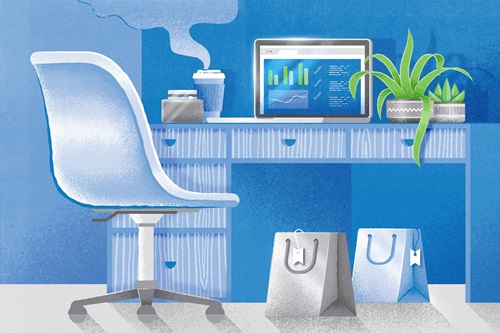You're probably familiar with life hacks – little tips or tricks that simplify your everyday life – but how many (if any) of those are hacks for your money? Here's a list of six great ways automation can help streamline your financial life.

1. Employer group RRSPs
If your employer offers any type of retirement contribution matching you should sign up as soon as possible. Most programs allow you to have a percentage of your income taken off each pay cheque – which your employer will then match – and have total amount automatically deposited into a group Registered Retirement Savings Program (RRSP) or group pension plan.
If you can, choose to contribute the highest amount possible. You'll not only be building your retirement fund without thinking about it, you'll be taking advantage of free money to grow your savings faster. A big bonus to group RRSPs is the money comes off your pay cheque before income tax is calculated, which means you'll pay less tax and take home more money every month.
2. Pre-authorized contributions
One of the best ways to save is to set money aside before you get a chance to spend it. Setting up a Pre-Authorized Contribution (commonly known as a PAC) lets you automatically move a set amount of money from your chequing account to your savings or investment accounts however often you choose. For example, setting it up to move money every time you get paid means you're less likely to miss that $50 and removes the temptation to spend it.
3. Point-of-sale savings tools
Another great way to "trick" yourself into saving is to do it every time you spend. Take advantage of tools, like Top-Up Savings, that allow you to save money every time you use your debit card for any point-of-sale (POS) transaction. Choose to either round your purchases up to the nearest dollar (adding the extra cents to your savings) or add a fixed amount onto each purchase (adding that specific amount to your savings). Now you'll be growing your savings every time you grab that morning coffee or fill up on gas.
4. Digital goal trackers
We all have financial goals, but often they exist in our own heads or in a conversation, perhaps with your partner, that went something like, "one day it'd be nice to (take a trip, buy a house, adopt a pet, etc.)." Making your goals tangible can be difficult, so to help consider using a digital tool to get your goal on paper (so to speak) and more importantly track your progress toward achieving it. Servus's online banking tool, MyGoals, breaks down your savings goals into realistic payments and calculates your estimated achievement dates, all while providing visual progress updates to let you know if you fall behind or jump ahead.
5. Automatic bill payments
Missing a bill payment could cost you more than late fees – it can lower your credit score. Life is busy, so eliminating the need to keep track of so many due dates means you won't fall behind. That's where automatic bill payments come in. You can set up automatic payments for almost any regular expense - your credit cards, cell phone, utility bill – you name it. Paying your bills on time, every time will help keep your credit score in good standing.
6. Loan repayments
If you have a loan, whether it's for education, a car or your mortgage, you probably treat your payments as a fixed expense – that's great. What's even better is topping up your loan payment and automatically transferring the extra money into a savings account. For example, if your car payment is $230/month and you topped it up to an even $300, you would be saving $70/month without even thinking about it.
With these automation hacks you can stay in control of your money and achieve your financial goals faster. Bonus hack: once you reach a special purchase goal or pay off a debt – don't stop saving! Instead, redirect that money toward a long-term goal like retirement.

